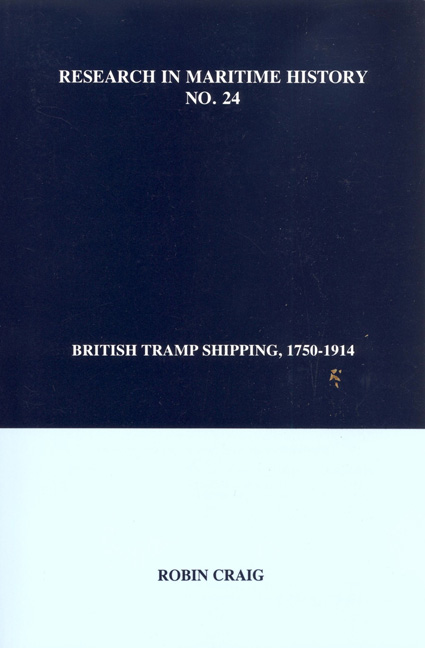Book contents
“The African Guano Trade”
from The Trades
Summary
In 1843 British shipping was suffering from the effects of foreign competition abroad, industrial depression at home, and from the consequences of the shortlived boom in shipbuilding in the years between 1839 and 1841. Shipowners were bemoaning the depreciation in shipping values which had followed the burst of speculative shipbuilding largely brought about by a vast but temporary expansion in corn imports, during which period insufficient tonnage was available to meet demand, by 1843 the shipowners at many ports were anxiously seeking employment for more tonnage than the trade of the country could accommodate, and the guano trade provided an unexpected means of speculating profitably in a new and unusual adventure.
Guano, the accumulated droppings of countless sea birds over many centuries (the name derived from the Peruvian word huano,meaning dung), had been known as a fertilizer in South America from very early times. For that purpose it had been highly valued by the Incas, and was known in Europe as early as 1590. But the possibility of guano being useful to European agriculturalists was not recognized until the nineteenth century. Baron von Humboldt, the German naturalist, brought samples home with him at the end of his extensive South American journeyings in 1804, and these were analysed without their properties as a potentially useful soil dressing being generally appreciated, although some inconclusive experiments were made both in Germany and England.
For a number of years in the 1830s attempts were made to exploit the rich guano deposits of the Peruvian islands. The two men who were foremost in efforts to promote a trade were a Peruvian merchant, Francisco Quiroz, who had commercial experience in Europe, and a French expatriate trader, Achilles Allier. Both had tried to interest British and other merchant houses in this novel and highly speculative trade. Quiroz had contacts with William Joseph Myers, a Liverpool merchant with trading interests in South America, and it was Myers who finally provided Quiroz with some capital and who agreed to handle guano consignments in England. Horatio Bland was associated with Myers in a merchant house at Valparaiso which traded as Myers, Bland and Company, and this firm sent thirty bags of guano from Valparaiso to Liverpool in the Heroine, which arrived at the latter port in July 1839, consigned to the parent house, W.J. Myers and Company.
- Type
- Chapter
- Information
- British Tramp Shipping, 1750–1914 , pp. 85 - 120Publisher: Liverpool University PressPrint publication year: 2003

